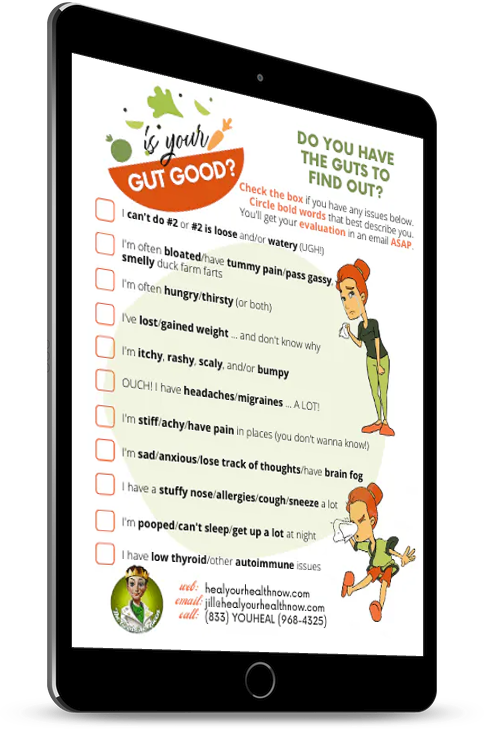 By Dietitian Jill Place t
By Dietitian Jill Place t
OK .,. let’s get down and dirty here and actually PLAN OUT your VERY FIRST Health Self-Experiment. My apologies to those who have been dabbling in these for a long time.
But I think I’ve come up with a format that will work well for you whether you’re a fledgling or a full-grown soaring eagle. Before you begin, however … I’d definitely encourage you to reread the three articles that go along with this one.
Magic Pill Mindset BEGONE! first helps you change your mindset so you CAN experiment. Then … EXPERIMENT Your Way to Health gives you a general idea of how experiments work. And … finally … Setting Up YOUR Health Self Experiment shows you how to begin one.
Now we’re going to finish the process … I’m going to review stuff I talked about in previous articles. Then I’m going to explain the “Always”, “Never” and “Sometimes” that every self-experiment needs.
And … Ta … DA … here’s a worksheet made especially for you to guide you through this whole process.
Neat, huh? OK … now let’s review the stuff we talked about in the last article …
What Is Your Wellness Goal?
Obviously, it’s important to figure out where you want to go with your health. Whether it’s losing weight or healing your leaky gut … pick a goal … but be sure to make it …
- REASONABLE and DOABLE
- WITHIN A TIME FRAME … and …
- MEASURABLE
In other words, frame it in such a way that you can do it without a huge leap of faith or physiology. So … instead of making it a goal to lose 50 pounds in a week … maybe 1-2 pounds is actually doable. Make the goal so that it’s doable.
Second … include a time frame … like 14, 30, or 60 days. Don’t stretch it out too long on your first try. Because the object of a self-experiment is to see if it’ll work so that you’re willing to continue it.
Third … make it measurable. Even though the best measure of weight loss is pounds lost, perhaps it’s best if you focus on the PROCEDURE instead of the pounds.
Actually, for all health experiments … that’s a better idea. The outcome then is just whipped cream on the sundae. With a cherry on top.
For example, for my intermittent fasting goal … I chose the sentence … “I will practice intermittent fasting to see if it will help me lose weight for 30 days.”. It was that easy. My measurement of success was two things … one the procedure and another the weight loss. But I didn’t put a number on it … I’ll explain that below … read on …
What Is Your Heart-Reason?
I think I adequately explained that in my last article. But … if you want to read more about it, I’d suggest Your Heart’s Desire by Sonia Choquette and The Desire Map by Danielle LaPorte. Love both these books! As they explore the heart-reasons for doing things.
So really dig deep and figure out your “Powerful WHY” for the change. Now … I’m aware that you can only work within your understanding of the issue.
But do the best you can … by doing the process you’ve created you may discover an even deeper “WHY”. You’ll never, however, find it if you don’t do some other action first. After all … it IS only an experiment and it CAN fail. If it does, however, you can then figure out an even better one with an even better “WHY”.
So use the processes in Setting Up YOUR Health Self Experiment. And then write out your Heart-Reason the best way and clearest way you can. Here’s mine … I refuse to hide one more day. And learn to inhabit the body I deserve to have NOW (it’s best if you put your heart-reason in terms of it happening right now).
It doesn’t have to be perfect. But it does have to reflect the rhythms of your heart.
What Are Your “Always”, “Never”, and “Sometimes”?
I thank Glenn Livingston, PhD and his book, Never Binge Again, for this idea. But way before I read his book I was encouraging my weight loss clients to make up their own rules for their food and lifestyle plans.
One came in after years of treatment one day and announced “I’m going to eat meat and vegetables and give up bread (garlic bread was his weakness) and other starches now”. That was way before Paleo, Keto Whole30, and Pegan.
He lost 80 pounds and ran a marathon with a previous history of asthma. All from making up his own rules. So Livingston and I are correct in encouraging people to figure it out for themselves. Of course, we also help.
But here’s a terrific framework (I simplified Livingston’s a bit … ) to make this work …
The “Always” …
This is pretty self-explanatory … in other words … what you will “ALWAYS” do in your experiment. For mine, I chose “I will always eat six hours a day mostly between the hours of 12 to 6PM”.
I gave myself a little leeway there as my busy schedule doesn’t always allow for me to start eating at 12 noon on the dot. For example, I had to leave yesterday by 11:30AM to get to a meeting. So had an early lunch around 11. But finished eating about 5:ooPM … six hours.
In reality, I just skip breakfast. And eat some lunch and a dinner, which seems to work great for me. As well as skipping night-time snacking. I don’t know, however, what to do with all those Gluten-Free Everything Bagels!
So think about what you might “always” do in your experiment. You can always eat 5 servings of fruits and vegetables a day. Or always eat Gluten-Free foods. Or always exercise every day for 30 minutes.
Whatever you choose for your “always”, make sure you’re ready to commit to it for the time frame you choose. And realize too that the experiment is finite … i.e. you only have to do it for 14 days.
The “Never” …
That’s easy for MY experiment … my “never” was eating at any other times during the day than those six. By you can you can use “never” to define other dimensions in your experiment. And also behaviors that you think might sabotage your efforts, like snacking in between meals.
For example … if your “always” is to eat Gluten-Free foods, your “never” might be to not eat anything else that contains gluten. To do this, you’d have to read up on those things and avoid items like soy and BBQ sauces (fortunately, there are Gluten-Free versions that I even carry to give to cooks at restaurants). As well as not just wheat (although that could be your experiment … to always eat wheat-free foods) … but oats, barley, and rye too.
You’d also have to “never” eat foods that contain gluten … it can be hidden in lots … including most vegetarian options. But … if your goal is to REALLY eat Gluten-Free … you might want to consider all those “nevers” too.
The “Sometimes” …
These are conditional things that may or may not have to do with the “always”. Another example … I found doing my intermittent fasting research that several people had noted that drinking wine did not slow their weight loss.
But I have a tendency to drink wine if I have it at home. And I don’t always drink it out either. So my “sometimes” is to drink wine when I am out to dinner … which is usually a couple of times a week.
If your “never” is not to eat gluten, you might want to make an exception on rare occasions. My example … I “sometimes” go out to dim sum about once a month and do eat baos (with bread shells) and dumplings (with wheat won ton wrappers).
It’s my joy and something I do allow myself. However … this is not for a particular experiment but instead for an ongoing lifestyle choice. If you’re doing an experiment, you might want to stick strictly to the parameters you make for yourself.
But however you set this up, it will be valid only for your own experiment and no one else’s. And … again … it’s only for a finite time.
The Measurement …
Remember I advised to focus on the procedure of the experiment to measure success. For me, just sticking to my “always” about 95% of the time (never perfect … and I don’t expect you to be) was a huge triumph. As I tend to sabotage weight loss and exercise efforts.
But there CAN BE other measurements. I DID weigh myself daily (this measurement can also be part of your “always”) but focused more upon a weekly average as a measurement of my success. Because weight can fluctuate widely from day to day.
Also, I didn’t put a number on success … but after 30 days I had lost 7 pounds … which was a big win in any weight loss book. But I would have been also satisfied with 3 or 4 … the traditional expected loss for a month.
But if you’re doing something like going Gluten-Free, your measurement of success might be whether you feel better in some way (i.e. having less gas, bloating, constipation, diarrhea, acne, etc.). As this is obviously something that can’t be measured with a scale. But is just as valid as pounds lost.
Getting Started …
OK … get going! download the worksheet below and fill it out. It doesn’t have to be perfect (because you’re not). But it DOES have to be a heart-felt reflection of how much you care for yourself. And how far you’re willing to go to make that self-care a reality.


Leave a Reply